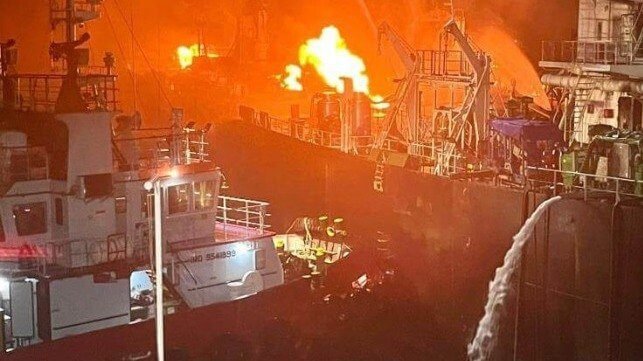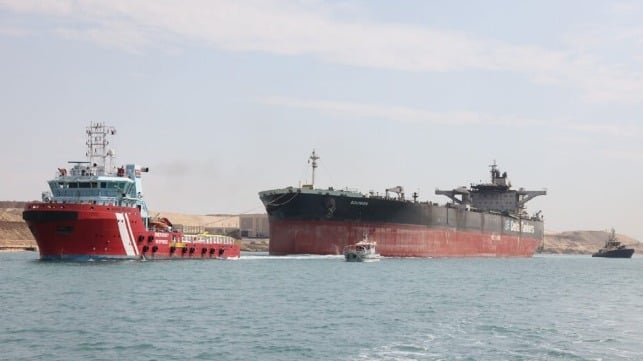Nearly seven weeks after Houthi terrorists attacked the tanker Sounion in the Red Sea, satellite data indicates that the fires on the vessel’s decks have finally been extinguished. The ship was targeted by Yemen’s Houthi rebel group on August 21, leaving it adrift after disabling the engine. Subsequent attacks by the rebels resulted in multiple small fires that burned for weeks, until Greek salvors began fighting the fire on September 23. UK Maritime Trade Operations reported that the firefighting efforts had achieved promising results by the end of September, with some fires under control within a week.
As of Sunday, the firefighting effort on the Sounion was near completion, with some fires extinguished and others under control. Open-source intelligence analysts reported that the ship’s heat signature was no longer detectable on infrared satellite imagery, indicating that the fires had been extinguished or suppressed to the point of being undetectable. Visual imaging from the EU Sentinel-2 satellite also showed an absence of smoke at the scene, marking a significant improvement from previous days.
The successful extinguishing of the fires on the Sounion is a positive development for the Red Sea region. With a cargo capacity of one million barrels, a potential explosion, sinking, or spill from the ship would have had a pollution impact greater than that of the Exxon Valdez disaster. A spill of this magnitude would have affected a large area of the Red Sea, including the Houthi-controlled coastline of western Yemen.









